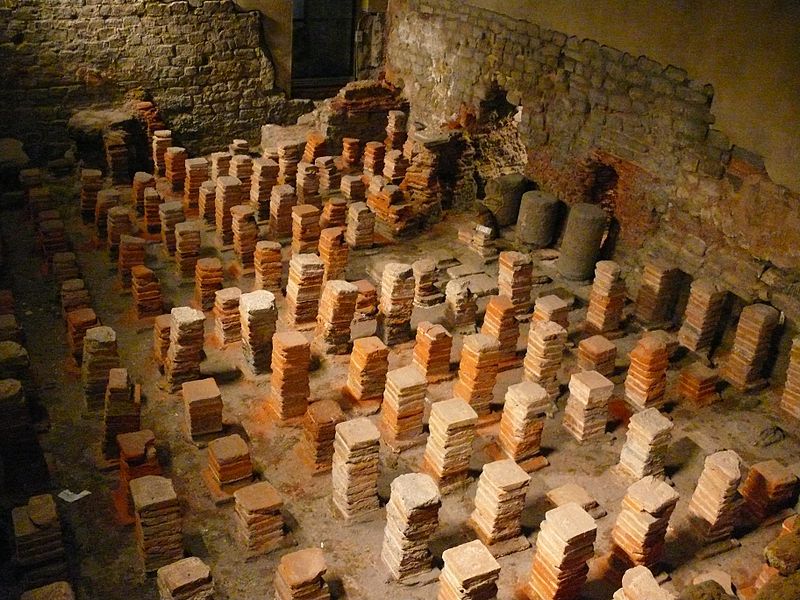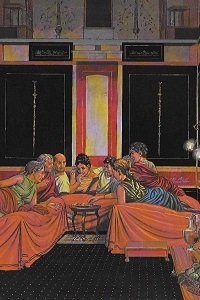The hypocaust system
The hypocaust system (hypocaustum in Latin) was a heating system used in wealthy Roman homes and Roman baths and the closest thing to central heating today. The hypocaust was a system that circulated hot air under the floor and surrounding walls.
Hypocaust construction

Bath, UK CC BY-SA 3.0 |
Roman houses with a hypocaust system had a furnace that would heat the air. The floor was raised above the ground by pillars called pilae so that hot air could circulate under it. The floor consisted of a layer of tiles, followed by a layer of concrete, then another layer of tiles. There were also tile or clay flues under the walls, which circulated the hot air to the rooms' floor and walls above. The hot air would at last escape from the roof. The walls had ceramic tiles in them to maintain the heat. The Romans also made sure that the hot air and smoke did not leak from the floor and walls, which was quite a feat of engineering considering the materials used at the time. It is worth noting that a leaking floor was hazardous and could even cause death as carbon monoxide is odorless and toxic.
The Romans placed the rooms that required the most heat close to the furnace, and they would increase the heat by adding more wood. In the Roman baths this room was called the caldarium. In his book De architectura, Vitruvius describes the construction of the hypocaust for the public baths and how the Romans could save fuel by building the hot room for men (the caldarium) next to women, with both rooms adjacent to the tepidarium.
Hypocaust system operation and cost
Operating a hypocaust was quite expensive, and only wealthy Romans could afford such a system in their homes. Building a hypocaust was also costly and required skilled engineering as the hypocaust had to be waterproof and have no leaks. It required slave labor and wood to fuel and monitor the furnace for hours. Also, maintenance and repair costs could be high.It is worth noting that most Romans could experience the joys of such a heating system by simply visiting the thermae or the hot Roman baths where walls and floors were heated. The Pompeii Old Baths is an excellent example of such public baths.
Interesting facts about the hypocaust system
|
SOURCES
- On the history and art of warming and ventilating rooms and buildings (R. Stuart, University of Michigan Library, 1845)
- De architectura The Ten Books on Architecture (Vitruvius)
YOU MAY ALSO LIKE
Return from Hypocaust System to Homepage
